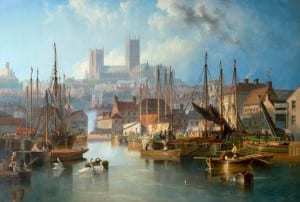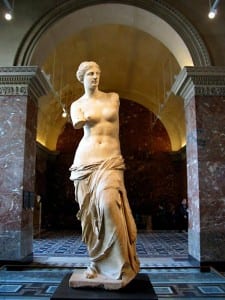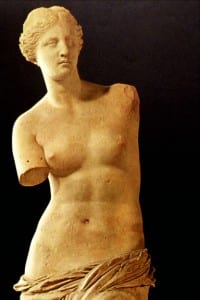When creating a performance piece, there are always going to be complications and ongoing changes. Sometimes something unexpected happens which changes the general direction of the piece; or helps continue its’ development. Clearly, because our performance site is a museum/art gallery, constant renewal and re-evaluation is going to take place. Due to rehanging in the gallery rooms and replacement of particualar sculptures or paintings the whole atmosphere and style may alter from time to time. This is mirrored by my group’s developing ideas and how our initial inspiration has evolved into something much more solid.
I feel that we are extremely lucky to be performing in a space which blends so nicely with theatre and performance ‘Demographic analyses of cultural activity show that people who go to the theatre, concerts, and movies are also museum visitors’ (Bennett 2013, p.5). It has been an opportunity for us to take something traditional and static and bring it to life; giving it energy and a sense of contemporary culture. Combining theatre and hanging art work together means that we have been able to analyse how a painting is already performing in a sense and put those details under a magnifying glass. For example, our initial idea stemmed from a painting being idealised and has developed into something real and live which is a person masking their face with makeup; so essentially being something which they are not. This is also where our discussion on instagram grew from because it is something which exists in a modern culture; it’s current and it’s now. We found it interesting to link back to the way in which an 18th century painting has been idealised with a tool which people use today to idealise photographs of themselves.‘Yet museums traffic mostly in material designated as representing the past, while theatrical performance takes place resolutely in the present,'(Bennett 2013, p.5) .
As I have written in previous posts, we initally planned our piece based around the painting of The Brayford Pool and Lincoln Cathedral (1858).
 Our main concensus links back to the idealisation of the painting and its’ superior positioning in the gallery. We planned for this to be our focal point and explanation behind our ideas. After speaking to members of staff in the Usher Gallery we were assured that the painting would stay hanging as it was even with changes within the gallery. However, unfortunatley when we were last in the building we discovered that the painting had been taken down due to further rehanging in that particular gallery. This caused our development process to come to a slight hault. We questioned the relevance of our current performance ideas without it but came to the conclusion that although our piece may have been inspired initially by that particular painting, it does not mean that it cannot share relevence with paintings as a general. We’re working with the idea of masking and revealing and the fact that we’re performing in an art gallery, regardless of what art work is there, still remains effective. After our initial panic, we took note of the irony which is the original painting’s replacement. Now hanging in the gallery room is a painting of Venus de Milo, an acient greek statue of Aphrodite- the goddess of love and beauty. Not only is it a painting of a sculpture; which is something neither live or the ‘real thing’, but it is also fitting how she represents beauty and we are going to be applying make-
Our main concensus links back to the idealisation of the painting and its’ superior positioning in the gallery. We planned for this to be our focal point and explanation behind our ideas. After speaking to members of staff in the Usher Gallery we were assured that the painting would stay hanging as it was even with changes within the gallery. However, unfortunatley when we were last in the building we discovered that the painting had been taken down due to further rehanging in that particular gallery. This caused our development process to come to a slight hault. We questioned the relevance of our current performance ideas without it but came to the conclusion that although our piece may have been inspired initially by that particular painting, it does not mean that it cannot share relevence with paintings as a general. We’re working with the idea of masking and revealing and the fact that we’re performing in an art gallery, regardless of what art work is there, still remains effective. After our initial panic, we took note of the irony which is the original painting’s replacement. Now hanging in the gallery room is a painting of Venus de Milo, an acient greek statue of Aphrodite- the goddess of love and beauty. Not only is it a painting of a sculpture; which is something neither live or the ‘real thing’, but it is also fitting how she represents beauty and we are going to be applying make-
up throughout our piece. In a way the painting has been changed at just the right time in our creating process because we have reached a point where we are sure of what we want to show and reveal, and actually now this new painting fits better than the original one. We still plan to project a photograph of the Brayford pool painting above where it used to hang to illustrate the progression of art through time and to link all of our new and old inspirations together.
Work cited
Bennett, Susan (2013) Theatre and Museums, Basingstoke: Palgrave Macmillan

